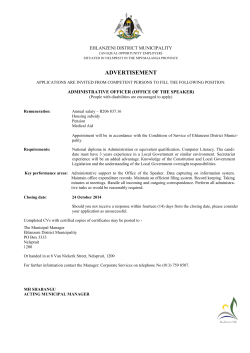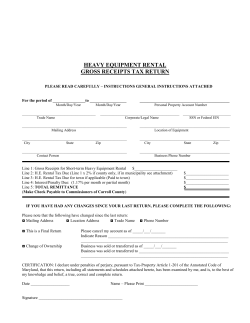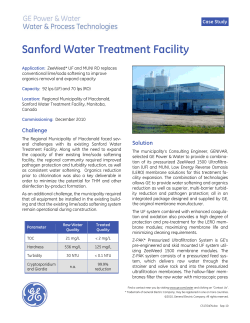
Instructions for West Virginia Sales and Use Tax Return, Form...
Instructions for West Virginia Sales and Use Tax Return, Form WV/CST-200CU General Instructions Monday - Friday: 8:00 a.m. - 5:00 p.m. EST. Or visit our website at www.wvtax.gov. Any taxpayer that pays a single payment of $100,000 for any tax type in the immediately preceding tax year shall electronically pay all tax due. West Virginia accepts both ACH Credits and ACH Debits. ACH Credits are initiated by the taxpayer through their financial institution. ACH Debits are initiated by the Tax Department based upon information provided to us by the taxpayer through our Pay-by-Phone automated tax payment system or by using one of our online filing applications. Visit www.wvtax.gov and click on the MyTaxes link or electronic filing for business links. Form WV/CST-200CU, revised 10/2011, includes sales of wine and liquor to private clubs and purchases made using direct pay permits. Direct Pay permit holders are no longer required to file a separate Direct Pay Permit Sales and Use Tax Return. Mail completed return to: West Virginia State Tax Department Tax Account Administration Division P. O. Box 1826 This return is used for reporting (or amending previously filed), state and municipal sales and use taxes. This return must be filed when due, even if you have no tax to report or you pay your tax electronically. Charleston, WV 25327-1826. To file and pay electronically, visit our website: https://mytaxes.wvtax.gov/ Step by Step Instructions for completing return Verify that the tax account number, name, address and reporting period entered on the top of your return are correct. If you need to change your name or address, please use form BRT801A which can be found at www.wvtax.gov. Your return will be electronically scanned. Send the original return only. Do not send a photocopy. Use only BLACK ink. If you are completing a return and do not have a tax account number assigned by the Tax Department, fill in your federal employer identification number (FEIN) or social security number (SSN). Also fill in your legal and business names, address and period covered by the return. Please print your numbers like this: 0123456789 Do not use: Ø7 Keep a copy of your return for your records for at least three years. If you have no entry for a line, leave the line blank. Exception – If you have no tax to report on this return, enter a “0” on line 29, like this: Do not take credit for previous overpayments unless authorized by the Tax Department. 29. $___________0__ Note: If you have a Direct Pay Permit and have collected no sales tax in the period, you should begin filing your return with Part II, line 11 if you have no sales tax to report. Amended returns should be indicated as such by checking the “Amended Return” checkbox. Part I. Sales Tax – State Questions? For Tax Information or Assistance call: (304)558-3333 or 1-800-982-8297 1 Line 1. Total Sales. Enter the total amount of all sales, do not include the sales tax collected. Do not reduce the amount on this line for sales returns and allowances. Line 7. Sales subject to state sales tax. Subtract line 6 from line 1 and enter total. Column 1 - enter only sales of food and food ingredients. Soft drinks, prepared foods and vending machines sales are to be reported as “all other sales” in Column 3. (see TSD-419 for additional information) Line 9. Sales tax due. Multiply line 7 by tax rate and enter total. Line 8. Current sales tax rates (provided) Line 10. Total state sales tax due. Add line 9, Column 1, Column 2 and Column 3 and enter total. Column 2 - enter only sales of wine and/or liquor to private clubs. Part II. Use Tax – State (includes purchases or lease of tangible personal property or taxable service made using direct pay permit) Column 3 - enter all other sales. You owe use tax on the total purchase price of taxable tangible personal property or taxable services (hereinafter called property) that you used, stored, or consumed in West Virginia upon which you have not previously paid West Virginia sales or use tax. Line 2. Sales for which you received an exemption certificate. Enter sales that are exempt from tax because you accepted an exemption certificate. Line 3. Sales for which you received a direct pay permit number. Enter sales that are exempt because you accepted a direct pay permit. Examples of reasons you may owe use tax: 1. You purchased property without paying sales tax from a seller outside of West Virginia. You would have paid sales tax if you purchased the property from a West Virginia seller. 2. You purchased property without paying sales tax for resale (to sell to others) or for a nontaxable use. You then used the property in a taxable manner. 3. You purchased property without paying sales tax and later gave the property away free to your customers. Line 4. Sales returns, allowances and bad debts. Enter the total amount of the following: Trade-in allowances and cash discounts on taxable sales Refunds or credits for returned merchandise, if the sale of such merchandise was reported as a taxable sale on a prior return or on this return and the tax was refunded to the purchaser Line 11. Enter total of purchases of food subject to sales tax upon which tax was not paid. Multiply by the tax rate and enter the tax due. Bad debts on taxable sales, charged off for income tax or franchise tax purposes, if the sales were reported as taxable sales on a prior return or on this return, and if your sales are reported on an accrual basis Line 12. Enter total of all other purchases subject to sales tax upon which tax was not paid. Multiply by the tax rate and enter the tax due. Line 5. Other. Enter the total amount of any other allowable subtractions. Line 13. Add lines 11 and 12 and enter total. Line 6. Total exemptions. Add lines 2 through 5 in columns 1 and 3. Note: If you have purchases for which you have paid sales/use tax to another state, see instructions on page 4 for the computation 2 required to claim credit for the tax paid in the other state. Line 23. Total municipal use tax due. Add lines 19d through 22d, and enter total. Part III. Sales Tax – Municipal Note: If you have purchases for which you have paid sales/use tax to another municipality, see instructions on page 4 for the computation required to claim credit for the tax paid in the other municipality. Your sales of tangible personal property and services that are subject to the West Virginia state sales and use tax are also subject to the municipal sales or use tax if the sale takes place or services are rendered in a municipality that imposes municipal sales and use tax. Part V. Total Amount Due Line 24. Total sales and use tax. Add lines 10, 13, 18 and 23 and enter total. The following chart provides the municipal codes for your use in completing lines 14a through 17a and 19a through 22a. Municipality Code Name Rate 54232 Williamstown .01 06020 Huntington .01 Lines 14a through 17a. codes from table above. Line 25. Enter any tax collected in excess of line 10 and 18. You must remit all tax collected from customers. Line 26. Interest must be added to any tax due that is not paid by the due date of the return even if an extension of time for filing has been granted. Interest is due from the due date until the date the tax is paid. Interest is imposed at an adjusted rate established by the Tax Commissioner. The annual rate will never be less than nine and one-half percent (9.5%). Interest will be determined and in effect for periods of six months. Enter municipality Lines 14b through 17b. Enter the name of the municipality in which the sale occurred or the service was rendered. Line 27. Additions to tax in the amount of five percent (5%) of the tax due for each month, or part of a month may be imposed for the late filing of the return up to a maximum of twentyfive percent (25%) unless reasonable cause can be shown for the delay. Further, additions to tax may be imposed for not paying the tax when due. Additions to tax in the amount of one-half of one percent (1/2 of 1%) of the unpaid balance of tax for each month, or part of a month, the tax remains unpaid, may be imposed up to a maximum of twenty-five percent (25%). Lines 14c through 17c. Enter the total amount of sales subject to sales tax. Lines 14d through 17d. Multiply the sales subject to sales tax by tax rate and enter total. Line 18. Total municipal sales tax due. Add lines 14d through 17d and enter total. Part IV. Use Tax - Municipal You may access an Interest and Additions Calculator on our website at www.wvtax.gov or you may call (304) 558-3333 or toll free at (800) 982-8297 for assistance. Lines 19a through 22a. Enter municipality codes from the table above. Lines 19b through 22b. Enter the name of the municipality in which the property was used or the service was rendered. Line 28. Credit For state tax paid in another state. West Virginia sales and use tax law provides a credit for sales or use taxes that are properly due and paid to another state on property or services purchased outside West Virginia and subsequently stored, used or consumed in West Lines 19c through 22c. Enter the total amount of purchases subject to use tax. Lines 19d through 22d. Multiply the purchases subject to use tax by tax rate and enter total. 3 Virginia. The credit is allowed against (but not in excess of) the total of West Virginia state use tax imposed on the same property or services purchased in the other state. Company A brings the equipment into West Virginia for use in a municipality which imposes municipal sales and use tax. Company A can determine the West Virginia state and municipal use tax as follows: Use Tax – State 1. Purchase price .......................................... $ 10,000 2. 6.0% West Virginia State use tax ($10,000 x .06) ..................................... $ 600 3. Less 4.0% sales/use tax paid to State B ($10,000 x .04) ........................ 400 4. Net use tax due to West Virginia....... $ 200 5. Measure of tax ($200 ÷ .06 tax rate) ... $ 3,333.34 Company A should include the $3,333.34 on line 12. For municipal tax paid in another municipality. West Virginia sales and use tax law provides a credit for sales or use taxes that are properly due and paid to another state or municipality on property or services purchased outside of the State or municipality in which you are located and subsequently stored, used or consumed inside the State or municipality. The credit is allowed against (but not in excess of) the total of West Virginia state and municipal use taxes imposed on the same property or services purchased in the other state or municipality. Use Tax – Municipal 1. Purchase price .......................................... $ 10,000 2. 1.0% Municipality A sales/use tax ($10,000 x .01) ..................................... $ 100 3. Less .5% sales/use tax paid to Municipality B ($10,000 x .005) .............. 50 4. Net use tax due to municipality A ....... $ 50 5. Measure of tax ($50 ÷ .01 tax rate) ........ $ 5,000.00 Company A should include the $5,000 in part IV line 19c-22c under appropriate municipality. Note: When the combined state and municipal taxes paid to the other state/municipality equals or exceeds the combined West Virginia state and municipal use tax, no entry is required on the West Virginia sales and use tax return to report the purchase or the credit for tax paid to the other state/municipality on the same purchase. Example: You purchase an item subject to tax in Ohio and pay 7% sales tax (6% state tax and 1% local tax). You live in an area in West Virginia that imposes a 1% municipal use tax with the State rate 6%, for a total 7%. You would not report the purchase on the return since the combined rates are the same in Ohio and the city in West Virginia. Credit for tax paid in error. You may claim credit for tax paid in error by filing an amended return for the period in which the tax was overpaid and completing an affidavit for refund, form WV/CST-AF2. If you paid tax on purchases of items for use in your business and used those items in an exempt manner, you may claim credit by filing form WV/CST-240. Credit forms may be found on our web site, www.wvtax.gov, and must be attached to the return when claiming the credit. Once approved by the Tax Department, you may claim credit on line 28. The following example includes a situation a person may encounter with respect to West Virginia state, and municipal sales and use taxes, if they purchase items outside West Virginia or from a different municipality and are required to pay sales or use taxes to the other state and/or municipality. The example provides information on how to use the amount of sales tax paid to the other state as a credit against West Virginia state and municipal use taxes imposed and how to compute and report the West Virginia state and municipal taxes due. Check the appropriate box to indicate type of credit taken. If you are remitting tax due with a FIMS transfer, check the box. If you are attaching a request for credit or refund, check the box. Sign and date the return. 4
© Copyright 2025





















